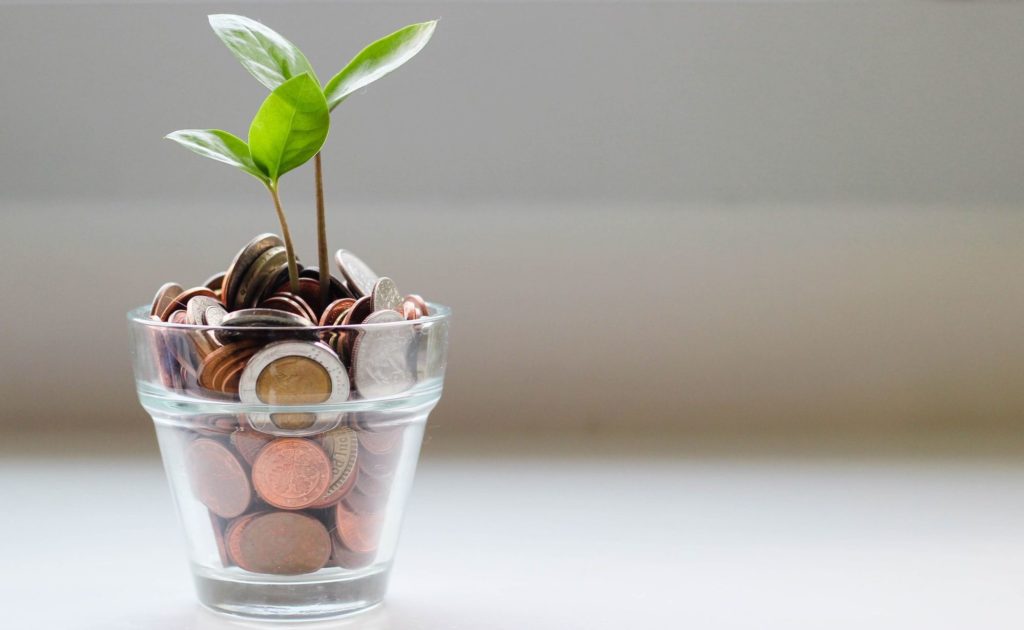Food production makes up a third of the global greenhouse gas emissions and is one of the biggest drivers of biodiversity loss. Many solutions for decreasing the environmental damage caused by the food system stress the role of farmers as food producers as well as providers of ecosystem services.
By this way of thinking, farmers have to champion environmentally friendly production methods and technologies. However, sustainable agriculture often requires a certain level of capital, and many farmers in low-income countries don’t have access to credit and financial information.
According to Nicole Bolomey, Director for Andreas Hermes Akademie International, both young and senior farmers struggle with understanding taxes, bank loans and other financial aspects of running a business and accessing capital. Meanwhile, some agribusinesses that have managed to untangle the net of information soon realize that they won’t be able to get financial support as they are either too small for bank loans or too large for microfinance.
So, how could policy makers, private investors and civil society organizations support farmers to access capital and invest in sustainable agriculture?
First of all, secure and long-term land tenure is essential for farmers to even consider putting time and money into sustainable agricultural methods.
Farmers who do not have their own land or a long term lease, tend not to invest in the land. Policies should, therefore, implement land reforms that increase farmers’ access to land and secure their land rights.
The importance of data
Farmers who have secure access to land often depend on local rural banks for accessing capital. But agriculture isn’t a business that banks generally work with, and farmers often don’t have a financial history, which means that banks don’t have sufficient knowledge and information about the farms. Donors and non-governmental organizations could provide local rural banks with access to data and information about farmers’ cash flows and assets. This way banks could tailor design loans and credit packages to meet the farmer’s needs and capacities, at the same time decreasing the level of risk with the investment.
Data that visualizes farmers’ cash flows and assets in relation to the investments can also prove to funders the positive effects loaning money to farmers can have on the livelihoods and food security of rural households. Information that can be used to encourage future funding, at the same time making it easier for policymakers to make evidence-based decisions.
“To get funding, one needs to show that the new approach can generate profit for a single farmer. One needs to demonstrate to both farmers and financial investors that the inputs yield payback and returns outweigh the risks,” says Adi Widyanto, Head of Conservation and Development at BirdLife Partner Indonesia.
Incentive for sustainability
Environmentally friendly agriculture methods and technologies can be profitable and make farms more resilient, if the positive ecosystem services and health benefits they provide are accounted for. Redirecting public subsidies and funds towards agricultural practices that harness biodiversity and care for water, forests and soils would reward farmers for producing food in an environmentally friendly manner. It would also deliver on policy goals, aiding the transition towards sustainability.
Noteworthy, the time lag between investment and payback in sustainable agriculture is quite long. Even if a farmer manages to access capital and invest in sustainable agriculture, it can take years to restore the land and ecosystem services. So, farmers need incentives and support to continue their work even several years after the initial engagement.
One way to encourage such long-term systematic transformation is through results-based payment, in which farmers are asked to commit to sustainable practices in return for pre-financing and receive higher payment later on if they continue to farm sustainably.
Looking beyond production
It is important to remember that sustainable production methods and technologies are not the only means for decreasing the negative impacts of the food system. Deforestation, the use of chemicals, waste management and transportation within food value chains are some of the other factors that must be dealt with in order to reduce the greenhouse gas emissions caused by the sector. Sustainability needs to become a business driver for the whole food system.
Consumption side measures should also be part of the portfolio. However, it is important to have in mind that certifications, which set up standards for sustainable food and are meant to move the cost to consumers, tend to add burden for the farmers and is not that effective, according to Christofer Steward, Senior Vice President and Global Head of Sustainability at OLAM.
The shortcomings of certifications have been on the radar for some time, and several major certification brands, like the Rainforest Alliance, have been updating their certification approach with smarter improvement scales, allowing for smallholders to move towards environmental and social criteria at their own pace.
While improving certifications is a step forward, there is also a need to include the negative environmental and social externalities in the price of food.
“First and foremost consumers care about the costs, while brand value and sustainability are secondary. We therefore need to make unsustainable food more expensive to push it out from the system,” Christopher Steward argues.
The food system is very fragmented as different actors manage different parts of value chains. A transformation of the system requires different actors to work together to find new ways to collaborate, without risking businesses’ commercial interest.
The private sector has a big role in this transition and an opportunity to deliver sustainability solutions at scale, but businesses need from the public sector to contribute with supporting policies and smart subsidies, whilst consumers and civil society organizations need to increase the demand for sustainable food.
Reporting from the Global Landscape Forum 2020 by Anna Ioannou. She is the Monitoring, Evaluation and Learning Officer at SIANI. Anna holds a Master’s Degree in Rural Development and Natural Resource Management from the Swedish University of Agricultural Sciences (SLU) and Bachelor’s Degree in Economics and Political Science from Uppsala University.
